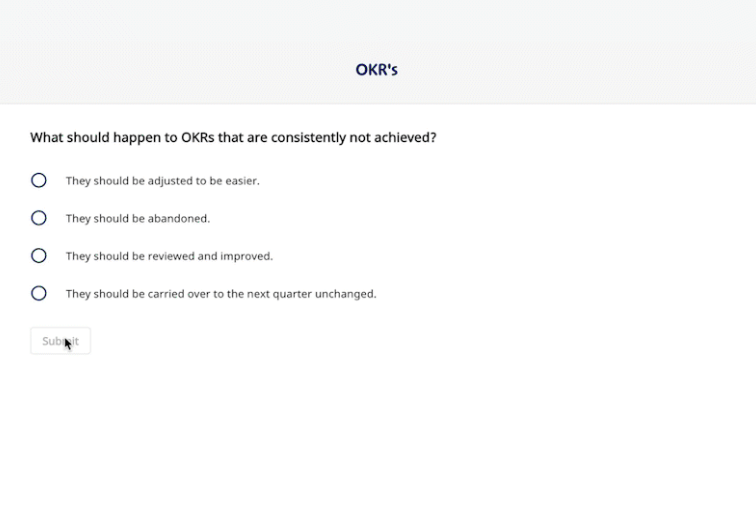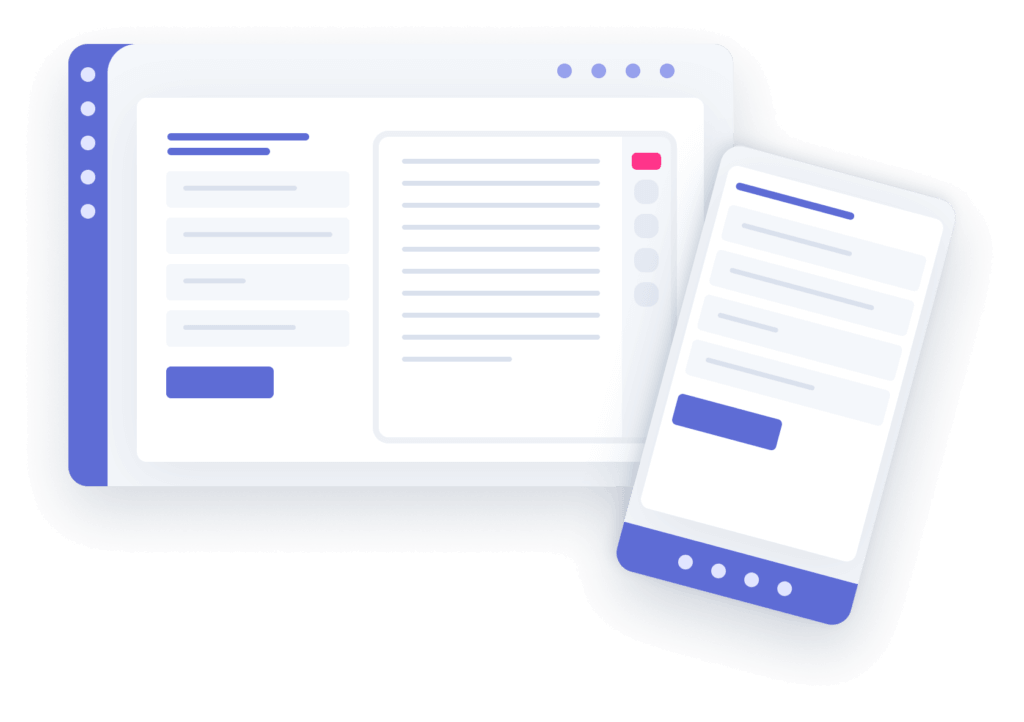Onboarding can set the groundwork for satisfied employees who stick around and refer other top talent to your company. A study found that a strong onboarding process leads to an 82% employee retention rate (Brandon Hall Group). But processes that lead to results like that aren’t always created on the first try.
Or the second. 😬
So when? The best onboarding programs are measured, tested, and tweaked continuously. But how do you measure your employee onboarding process so you can optimize its effectiveness for you and your employees? That’s what we’ll cover here.
KPIs and metrics to measure your employee onboarding process
Let’s look at a few ways you can measure your onboarding process.
1. New employee turnover
One way to gauge your onboarding program’s effectiveness is to track your employee turnover rate. Turnover is when someone leaves through voluntary actions such as quitting or involuntary actions like being fired. Of course, a voluntary or involuntary turnover doesn’t automatically mean the onboarding experience was subpar. For some companies, a high turnover can be due to the hiring process.
But for others, new employees leaving within the first few months can signal a problem with onboarding.
How do you calculate it?
Luckily, calculating your new hire turnover rate isn’t difficult. First, divide the number of employees who turnover within the first year (or the timeline that works for you) by your total number of employees. Then, multiply that number by 100.
If your results show that too many new hires are leaving too soon, and you know your hiring process is spot on, it might be time to re-evaluate your program. Do you have an onboarding checklist to help make new hires feel welcome? Are you following the 5C’s of onboarding?
2. Onboarding survey results
The purpose of onboarding surveys is to help you see what your new hires think of your onboarding program. So, what better way to measure your employee onboarding process than with this insight?
If you’re not conducting surveys, you can start collecting feedback monthly or bi-monthly. Here are some nuggets of wisdom you’re looking for:
- How did they feel during their first few days? Did they feel prepared? Welcomed?
- Did they have everything they needed to complete their tasks successfully?
- Did your company make them feel like they belonged after the first week?
3. Time to productivity
In a perfect world, every new hire will know the ins and outs of a company and start making huge contributions to projects within the first week.
But, unfortunately, that’s just not the case. Instead, new hires will experience a learning curve as they get to know your company and their role. This learning curve will impact how long it takes for your new hire to fully contribute to your company from their first day.
Also known as time to productivity.
You can calculate new hire time to productivity by subtracting their first day from the day they were fully productive in their role (this will vary) and then dividing that by the total number of new hires.
If you notice that your new hires take longer than the average time to be productive, it’s a good sign that the onboarding program needs some work
4. Onboarding completion rate
Are your employees completing their onboarding process? Or do they get halfway through the employee handbook and never open it again?
Your onboarding completion rate can also help you see if you need to adjust your program. But how do you measure completion rate? If you’re handing employees large stacks of paper, there’s no way to ensure they went through the material.
However, using tools that let you document your entire onboarding process and track its completion rate, you can easily see what’s being consumed and what sections need to be optimized.
Nuria Requena, Talent Acquisition Manager at Spacelift, says they also track the completion of key onboarding milestones to measure onboarding. Requena said,

5. Engagement levels
Measuring your onboarding process through your new hire’s engagement levels can slightly overlap with reviewing survey results. However, the key difference is you’ll actually talk to your employees.
When you meet with new hires one-on-one, you can find out how engaged they are in their new roles. Are they comfortable? Is there anything they’re struggling with?
And PS Don't forget Onboarding quiz results
Testing your new hire’s knowledge is a good way to determine how sticky your onboarding program is. Plus, it’ll also help reinforce the information they just consumed.
One way to do this is by asking new hires to let you know when they’ve completed a portion of their onboarding program so you can manually send their quiz. Another option is to use tools like Whale that automatically send quizzes to new hires to test their knowledge.

Tips to maximize the insight you get on your onboarding process
Now that you know the metrics you should track, let’s look at a few ways to make the most of the insight you uncover.
Keep your onboarding survey questions company-focused
The truth is that new hires aren’t always honest when answering surveys from their employers, even if they think something’s missing. After all, no one wants to seem inadequate or make it sound like they don’t think too highly of their new company.
So, what do you do?
Ask questions that take the pressure off them.
Instead of asking, “Do you understand the expectations of your role,” ask them, “Did the onboarding program clearly define what you can expect from your position.”
This can encourage them to answer more truthfully, and the clear language helps you get insight directly related to your onboarding process.
Win-win for everyone! 🥳
Set role-specific KPIs
Since the onboarding process should be personalized to fit a new hire and their role, focus on role-specific KPIs. For example, time to productivity can be wildly different for software developers and accountants. So, to have a more accurate measurement of their productivity or engagement levels, make sure you’re measuring them based on similar benchmarks for their role.
Utilize tools with built-in analytics
Manually tracking your new hire’s onboarding experience can be time-consuming and lead to gaps in your onboarding process. Not just for you but for your employees, too. By using employee onboarding tools that let you document your processes and track everything, you can quickly see where you have some bottlenecks in your program so you can target them head-on.
Bottom line?
The best onboarding programs aren’t one-time events but are constantly changing. While most companies know this, they struggle with measuring the metrics and KPIs that will impact the success of their program. Even if you don’t have the data to track everything right now, the goal is to remain consistent with the metrics you can measure. And since 17% of new hires voluntarily leave a company, it’s worth measuring every part of the employee experience — starting with onboarding (Mercer).
If you want to hit the ground running with a tool that lets you document and track your onboarding process, then try Whale for free today.







